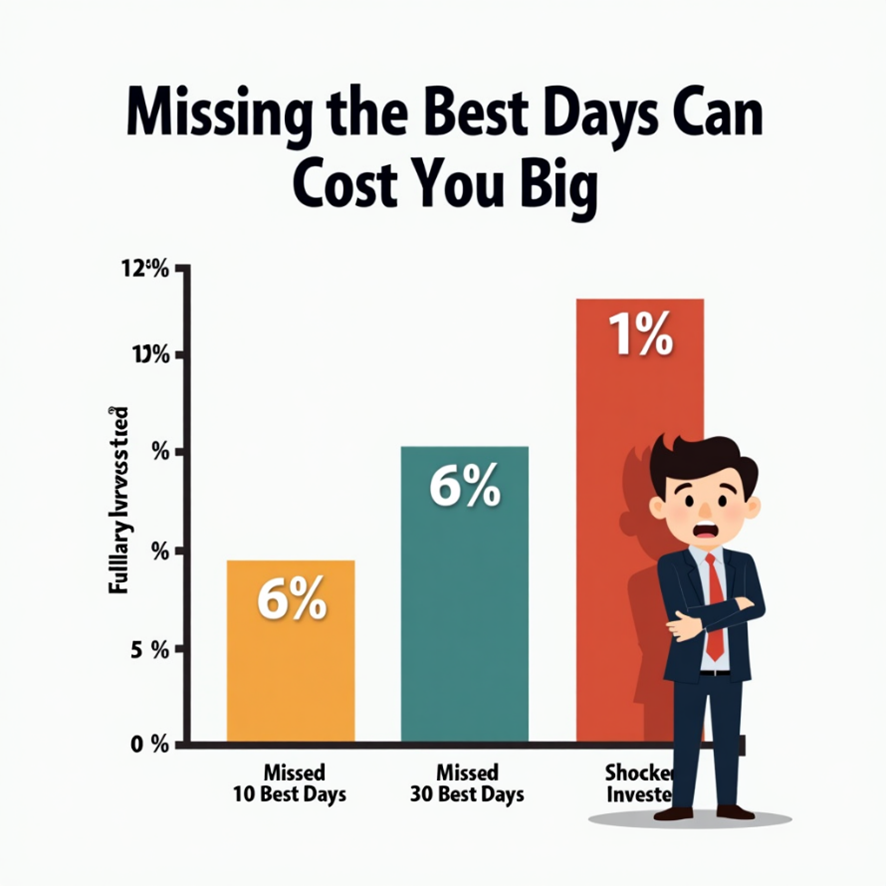There are no items in your cart
Add More
Add More
| Item Details | Price | ||
|---|---|---|---|
Introduction
Trying to guess the perfect time to buy or sell can feel like gambling. While market timing is tempting, it often leads to missed opportunities. On the other hand, time in the market — staying invested through ups and downs — has consistently proven more effective.
In this blog, we explain both approaches and show you what actually works, using a real-life story of two investors: Sameer and Aarti.08/06/2025

Market timing is when investors try to predict the highs and lows of the stock market — aiming to buy at the bottom and sell at the top.
It sounds smart but often backfires.Time in the market means staying invested regardless of market conditions. This strategy relies on compounding and long-term growth, ignoring short-term noise. It reduces emotional decisions and smooths out volatility over time.
It ensures you don’t miss the market’s best days, which are often unpredictable.

Real-Life Example: Sameer vs. Aarti
| Strategy | Market Timing | Time in the Market |
|---|---|---|
| Approach | Predict highs/lows | Stay invested long-term |
| Effort Required | High (monitoring, decisions) | Low (discipline-focused) |
| Success Rate | Low (misses best days) | High (due to compounding) |
| Best for | Traders | Long-term investors |
Conclusion
Markets are unpredictable, but your discipline shouldn’t be. Time in the market beats timing the market — almost every time. If you're investing for long-term goals, consistency matters more than cleverness.
Focus on staying invested, not outsmarting the market. Automate your SIPs, stick to your plan, and let time do the heavy lifting.
| Strategy | Avg. Return (10 Yr CAGR) | Avg. Risk (Volatility) | Avg. Investor Behaviour |
|---|---|---|---|
| Market Timing | 6% – 8% | Very High | Emotional exits, delayed entries |
| Time in the Market | 10% – 12% | Medium | Consistent SIPs, long-term focus |
| Random Investing | 5% – 7% | High | Unstructured, low wealth creation |

Dr. Satish Vadapalli
Research Analyst